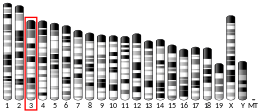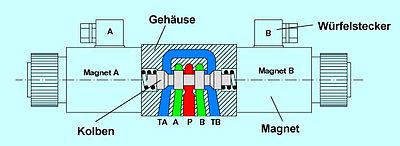투펠린
Tuftelin| TUFT1 | |||||||||||||||||||||||||
|---|---|---|---|---|---|---|---|---|---|---|---|---|---|---|---|---|---|---|---|---|---|---|---|---|---|
| 식별자 | |||||||||||||||||||||||||
| 별칭 | TUFT1, 엔트레스:7286, 터펠린 1 | ||||||||||||||||||||||||
| 외부 ID | OMIM: 600087 MGI: 109572 HomoloGene: 7985 GeneCard: TUFT1 | ||||||||||||||||||||||||
| |||||||||||||||||||||||||
| |||||||||||||||||||||||||
| |||||||||||||||||||||||||
| |||||||||||||||||||||||||
| 직교체 | |||||||||||||||||||||||||
| 종 | 인간 | 마우스 | |||||||||||||||||||||||
| 엔트레스 | |||||||||||||||||||||||||
| 앙상블 | |||||||||||||||||||||||||
| 유니프로트 | |||||||||||||||||||||||||
| RefSeq(mRNA) | |||||||||||||||||||||||||
| RefSeq(단백질) | |||||||||||||||||||||||||
| 위치(UCSC) | Chr 1: 151.54 – 151.58Mb | Chr 3: 94.52 – 94.57Mb | |||||||||||||||||||||||
| PubMed 검색 | [3] | [4] | |||||||||||||||||||||||
| 위키다타 | |||||||||||||||||||||||||
| |||||||||||||||||||||||||
투펠린은 치아 에나멜에서 발견되는 산성 인산화 당단백질이다.인간에서 투펠린 단백질은 TUFT1 유전자에 의해 암호화된다.[5][6]그것은 치과의 에나멜 광물화에 역할을 한다고 생각되는 산성 단백질이며 캐리즈 감수성에 관여한다.또한 저산소증 적응, 중피줄기세포 기능, 신경세포 성장인자 매개 뉴런 분화작용 등과도 관련이 있다고 생각된다.[7]
분류
에나멜 단백질에는 두 가지 종류가 있다.아멜로젠인 & 노나멜로젠인.투펠린은 비아멜로겐에 속한다.[8]
함수
이 단백질은 아멜로제네시스 기간 동안 짧은 시간 동안 형성된다.투펠린(tuftelin)의 기능은 논쟁 중에 있지만, 치아발달 시 에나멜의 광물화 과정을 시작하는 작용을 할 것을 제안한다.[9][10]
에나멜의 다른 중요한 단백질은 아멜로겐, 에나멜린, 아멜로블라스틴이다.
리서치
투펠린(TUFT1)에 대한 인간 인코딩 유전자는 교수들에 의해 복제되었다.예루살렘에 있는 히브리 대학-하다사 치과의학교의 대니 도이치와 아하론 팔몬.[6]
상호작용
Tuftelin은 TFIP11과 상호작용하는 것으로 나타났다.[11]
참조
- ^ a b c GRCh38: 앙상블 릴리스 89: ENSG00000143367 - 앙상블, 2017년 5월
- ^ a b c GRCm38: 앙상블 릴리스 89: ENSMUSG00000005968 - 앙상블, 2017년 5월
- ^ "Human PubMed Reference:". National Center for Biotechnology Information, U.S. National Library of Medicine.
- ^ "Mouse PubMed Reference:". National Center for Biotechnology Information, U.S. National Library of Medicine.
- ^ "Entrez Gene: TUFT1 tuftelin 1".
- ^ a b Deutsch D, Palmon A, Young MF, Selig S, Kearns WG, Fisher LW (July 1994). "Mapping of the human tuftelin (TUFT1) gene to chromosome 1 by fluorescence in situ hybridization". Mamm. Genome. 5 (7): 461–2. doi:10.1007/BF00357011. PMID 7919663. S2CID 20041600.
- ^ "TUFT1 tuftelin 1 [Homo sapiens (human)] - Gene - NCBI". www.ncbi.nlm.nih.gov. Retrieved 2018-03-05.
- ^ Nanci, Antonio (2017-08-15). Ten Cate's Oral Histology - E-Book: Development, Structure, and Function. Elsevier Health Sciences. ISBN 9780323485180.
- ^ Deutsch D (June 1989). "Structure and function of enamel gene products". Anat. Rec. 224 (2): 189–210. doi:10.1002/ar.1092240209. PMID 2672884. S2CID 37887565.
- ^ Deutsch D, Palmon A, Fisher LW, Kolodny N, Termine JD, Young MF (August 1991). "Sequencing of bovine enamelin ("tuftelin") a novel acidic enamel protein". J. Biol. Chem. 266 (24): 16021–8. doi:10.1016/S0021-9258(18)98510-8. PMID 1874744.
- ^ Paine, C T; Paine M L; Luo W; Okamoto C T; Lyngstadaas S P; Snead M L (July 2000). "A tuftelin-interacting protein (TIP39) localizes to the apical secretory pole of mouse ameloblasts". J. Biol. Chem. UNITED STATES. 275 (29): 22284–92. doi:10.1074/jbc.M000118200. ISSN 0021-9258. PMID 10806191.
추가 읽기
- Deutsch D, Leiser Y, Shay B, et al. (2003). "The human tuftelin gene and the expression of tuftelin in mineralizing and nonmineralizing tissues". Connect. Tissue Res. 43 (2–3): 425–34. doi:10.1080/03008200290001186. PMID 12489194. S2CID 12764804.
- Deutsch D, Palmon A, Young MF, et al. (1994). "Mapping of the human tuftelin (TUFT1) gene to chromosome 1 by fluorescence in situ hybridization". Mamm. Genome. 5 (7): 461–2. doi:10.1007/BF00357011. PMID 7919663. S2CID 20041600.
- Maruyama K, Sugano S (1994). "Oligo-capping: a simple method to replace the cap structure of eukaryotic mRNAs with oligoribonucleotides". Gene. 138 (1–2): 171–4. doi:10.1016/0378-1119(94)90802-8. PMID 8125298.
- Suzuki Y, Yoshitomo-Nakagawa K, Maruyama K, et al. (1997). "Construction and characterization of a full length-enriched and a 5'-end-enriched cDNA library". Gene. 200 (1–2): 149–56. doi:10.1016/S0378-1119(97)00411-3. PMID 9373149.
- Paine CT, Paine ML, Luo W, et al. (2000). "A tuftelin-interacting protein (TIP39) localizes to the apical secretory pole of mouse ameloblasts". J. Biol. Chem. 275 (29): 22284–92. doi:10.1074/jbc.M000118200. PMID 10806191.
- Bashir MM, Abrams WR, Tucker T, et al. (2000). "Molecular cloning and characterization of the bovine and human tuftelin genes". Connect. Tissue Res. 39 (1–3): 13–24, discussion 63–7. doi:10.3109/03008209809023908. PMID 11062985.
- Hartley JL, Temple GF, Brasch MA (2001). "DNA Cloning Using In Vitro Site-Specific Recombination". Genome Res. 10 (11): 1788–95. doi:10.1101/gr.143000. PMC 310948. PMID 11076863.
- Wiemann S, Weil B, Wellenreuther R, et al. (2001). "Toward a Catalog of Human Genes and Proteins: Sequencing and Analysis of 500 Novel Complete Protein Coding Human cDNAs". Genome Res. 11 (3): 422–35. doi:10.1101/gr.GR1547R. PMC 311072. PMID 11230166.
- Simpson JC, Wellenreuther R, Poustka A, et al. (2001). "Systematic subcellular localization of novel proteins identified by large-scale cDNA sequencing". EMBO Rep. 1 (3): 287–92. doi:10.1093/embo-reports/kvd058. PMC 1083732. PMID 11256614.
- Mao Z, Shay B, Hekmati M, et al. (2002). "The human tuftelin gene: cloning and characterization". Gene. 279 (2): 181–96. doi:10.1016/S0378-1119(01)00749-1. PMID 11733143.
- Strausberg RL, Feingold EA, Grouse LH, et al. (2003). "Generation and initial analysis of more than 15,000 full-length human and mouse cDNA sequences". Proc. Natl. Acad. Sci. U.S.A. 99 (26): 16899–903. Bibcode:2002PNAS...9916899M. doi:10.1073/pnas.242603899. PMC 139241. PMID 12477932.
- Clark HF, Gurney AL, Abaya E, et al. (2003). "The Secreted Protein Discovery Initiative (SPDI), a Large-Scale Effort to Identify Novel Human Secreted and Transmembrane Proteins: A Bioinformatics Assessment". Genome Res. 13 (10): 2265–70. doi:10.1101/gr.1293003. PMC 403697. PMID 12975309.
- Ota T, Suzuki Y, Nishikawa T, et al. (2004). "Complete sequencing and characterization of 21,243 full-length human cDNAs". Nat. Genet. 36 (1): 40–5. doi:10.1038/ng1285. PMID 14702039.
- Gerhard DS, Wagner L, Feingold EA, et al. (2004). "The Status, Quality, and Expansion of the NIH Full-Length cDNA Project: The Mammalian Gene Collection (MGC)". Genome Res. 14 (10B): 2121–7. doi:10.1101/gr.2596504. PMC 528928. PMID 15489334.
- Wiemann S, Arlt D, Huber W, et al. (2004). "From ORFeome to Biology: A Functional Genomics Pipeline". Genome Res. 14 (10B): 2136–44. doi:10.1101/gr.2576704. PMC 528930. PMID 15489336.
- Mehrle A, Rosenfelder H, Schupp I, et al. (2006). "The LIFEdb database in 2006". Nucleic Acids Res. 34 (Database issue): D415–8. doi:10.1093/nar/gkj139. PMC 1347501. PMID 16381901.
- Gregory SG, Barlow KF, McLay KE, et al. (2006). "The DNA sequence and biological annotation of human chromosome 1". Nature. 441 (7091): 315–21. Bibcode:2006Natur.441..315G. doi:10.1038/nature04727. PMID 16710414.






